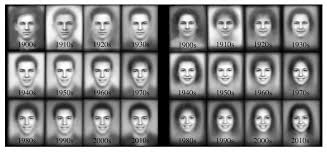How do humans get monkeypox? So far the disease, which spreads through close contact, has spread almost exclusively among adults. Although the most common way to get monkeypox in this outbreak has been through intimate contact, it is possible to get this condition through close contact such as a parent hugging or kissing a child.
How many cases of monkeypox are in the United States? As of July 25, 2022, there are 3,487 cases in 45 states, the District of Columbia, and Puerto Rico. These case counts include those who tested positive for either monkeypox virus or orthopoxvirus (OPX) as described in the case definition. The median age of patients is 35 years (range 18 to 76).
When did the monkeypox outbreak start? The first human case was identified in 1970, and historically, it has primarily been found on the African continent, except in cases related to travel or imported animals. However, in May 2022, multiple cases were identified in several countries where monkeypox has not been endemic, including the United States (U.S.).
Where is monkeypox most common? Scientists have known about it since 1958, when it was found in lab monkeys used for research. Monkeypox is most common in Central and West Africa. But in May 2022, health officials began reporting an outbreak of the virus in several regions outside Africa.
How do humans get monkeypox? – Additional Questions
What is the cure for monkeypox?
Tecovirimat (also known as TPOXX, ST-246)
CDC holds an expanded access protocol (sometimes called “compassionate use”) that allows for the use of stockpiled tecovirimat to treat monkeypox during an outbreak. Tecovirimat is available as a pill or an injection.
How long is monkeypox contagious?
Infection with monkeypox virus begins with an incubation period. A person is not contagious during this period. Incubation period is roughly 1-2 weeks. A person does not have symptoms and may feel fine.
Which countries have monkey pox cases?
Several European countries (Belgium, Finland, France, Germany, Israel, Italy, the Netherlands, Portugal, Slovenia, Spain, Switzerland, and the United Kingdom of Great Britain and Northern Ireland), Australia, Canada, Nigeria, Singapore and the United States of America have published full-length or partial genome
Does monkeypox stay in your body forever?
Monkeypox is usually a self-limited disease with the symptoms lasting from 2 to 4 weeks. Severe cases occur more commonly among children and are related to the extent of virus exposure, patient health status and nature of complications. Underlying immune deficiencies may lead to worse outcomes.
How do you avoid getting monkeypox?
All New Yorkers can protect themselves and prevent the spread of monkeypox in their communities: Ask sexual partners whether they have a rash or other symptoms consistent with monkeypox. Avoid skin-to-skin contact with someone who has a rash or other monkeypox-related symptoms.
How many cases of monkeypox are there in the world?
Worldwide, more than 19,000 cases have been reported in 76 countries, including 18,800 in 70 countries that haven’t historically reported monkeypox cases, the CDC data shows.
Does monkey pox cause death?
Initial symptoms of monkeypox include fever, body aches, and fatigue. The disease is similar to the smallpox virus but much less deadly. The disease can result in a rash that leads to red bumps on the skin.
Can dogs get monkeypox?
Theoretically, dogs can spread monkeypox, but it is unlikely, according to the American Veterinary Medical Association (AMVA). The CDC adds that “infected animals can spread [m]onkeypox virus to people, and it is possible that people who are infected can spread [m]onkeypox virus to animals[.…]”
Can you get monkeypox if you had chickenpox?
Monkeypox can look like other infections such as chickenpox or shingles, Dr. Wohl says. “Most adults who’ve had chickenpox don’t get it again,” he says. “They can get shingles, but that’s typically in a patch of skin on one side of the body.
What does monkeypox do to your body?
A rash that can look like pimples or blisters that appears on the face, inside the mouth, and on other parts of the body, like the hands, feet, chest, genitals, or anus. The rash goes through different stages before healing completely. The illness typically lasts 2-4 weeks.
How do you know if you have monkeypox?
Monkeypox Symptoms
Fever and muscle aches develop with flu-like symptoms. Lymph nodes become swollen. A few days later, a blister-like rash appears that looks like chickenpox. This may begin on the face and spread elsewhere on the body, or if sexually acquired, may begin in the genital or anal areas.
Does smallpox vaccine last for life?
Smallpox vaccination provides full immunity for 3 to 5 years and decreasing immunity thereafter. If a person is vaccinated again later, immunity lasts even longer. Historically, the vaccine has been effective in preventing smallpox infection in 95% of those vaccinated.
Can you get polio after being vaccinated?
Infected people who don’t have any symptoms can still pass polio on to others. There have been rare cases where polio has been caused by being vaccinated with a live version of the polio virus. This is no longer a risk in the UK because the vaccine used nowadays contains an inactive version of the virus.
How long do Covid antibodies stay in your system?
After infection with the COVID-19 virus, it can take two to three weeks to develop enough antibodies to be detected in an antibody test, so it’s important that you’re not tested too soon. Antibodies may be detected in your blood for several months or more after you recover from COVID-19 .
Why did smallpox vaccine leave a scar?
Scars of the smallpox vaccine are usually a result of the human body’s healing process. What happens is, when the skin is punctured, the body’s immune system responds and repairs the punctured tissues. Based on the skin cells’ different arrangement, the skin area tends to show a scar.
What vaccine left a circle on your arm?
Before the smallpox virus was destroyed in the early 1980s, many people received the smallpox vaccine. As a result, if you’re in your 40s or older, you likely have a permanent scar from an older version of the smallpox vaccine on your upper left arm.
When did they stop giving the polio vaccine?
The oral poliovirus vaccine (OPV) is a weakened live vaccine that is still used in many parts of the world, but hasn’t been used in the United States since 2000.


